YPRES SALIENT - Menin Road, Stage 1 - Railway Wood - Canadian Light Infantry Memorial - Nécropole St. Charles de Potyze - Wieltje Northumbrian Division Memorial
Years of visit: 2005, 2006, 2016
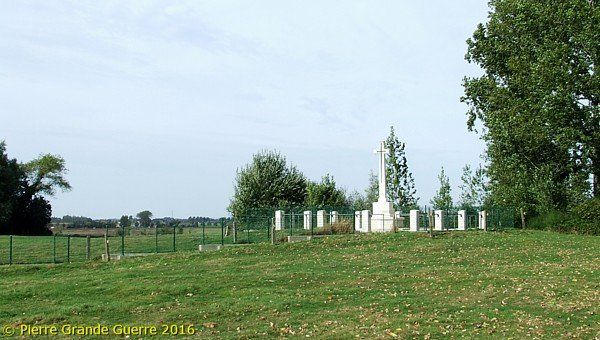
In 2016 we extended our route of 2005 and 2006. We start at the Grote Markt in Ypres. Via the Menin Gate Memorial we leave the town to the junction of “Hellfire Corner”. For a short distance we follow the Menin Road (N 8), stage 1 of other Menin Road routes here. From the N8 we turn left to Railway Wood to visit the R.E. Tunnellers' Grave and the Liverpool Scottish Memorial. From there we continue via the Oude Kortrijkstraat to the Memorial of the Princess Patricia’s Canadian Light Infantry. From there we turn around to go left and northward to Potijze to the French Nécropole of St. Charles de Potyze. From there we continue northward to the Memorial for the 50th Northumbrian Division at Wieltje. From there we return southward to the two memorials for British Captains, fallen in 1915.
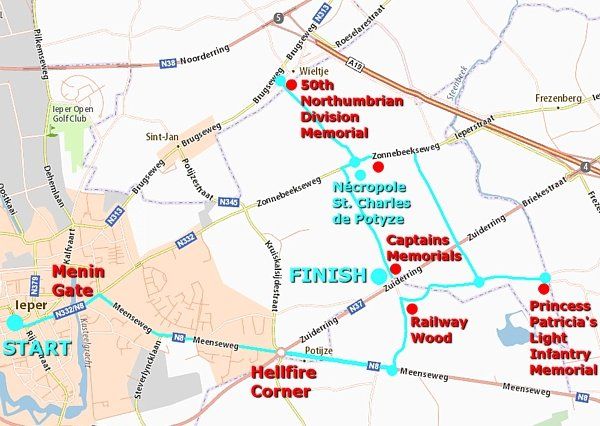
We start at the Grote Markt in Ypres.
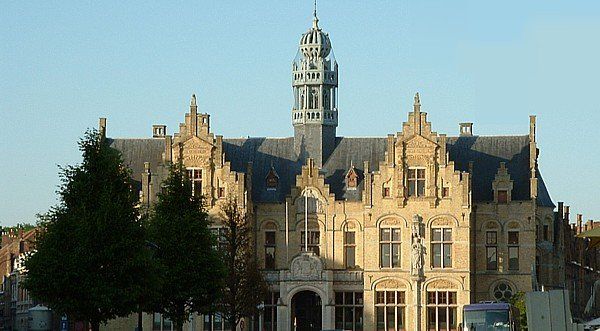
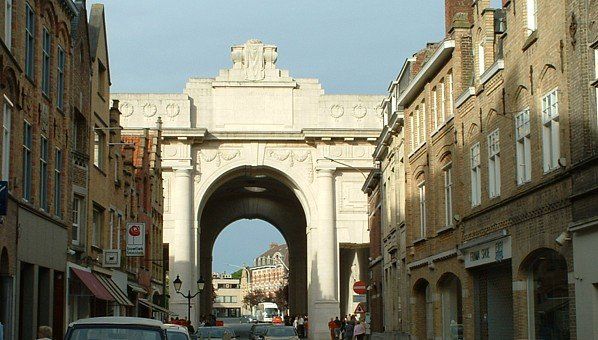
The Menin Gate
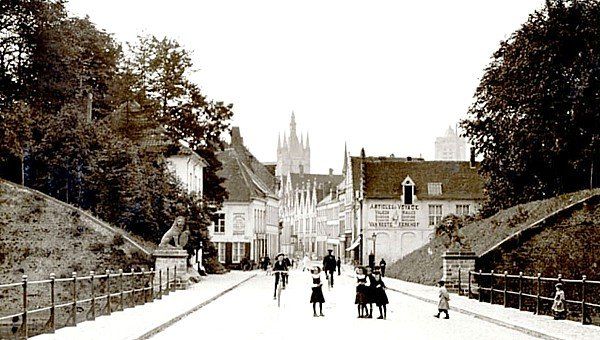
In 1913 and 1914 the Menin Gate only possessed two lions on both sides of the street.
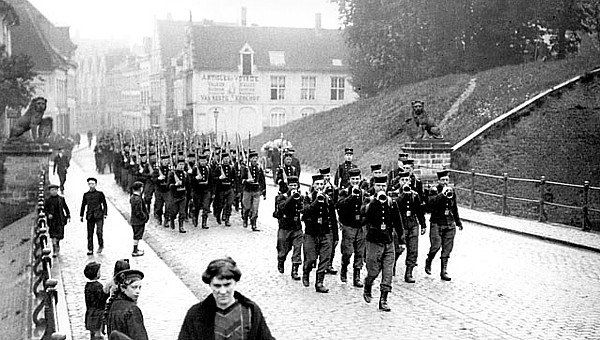
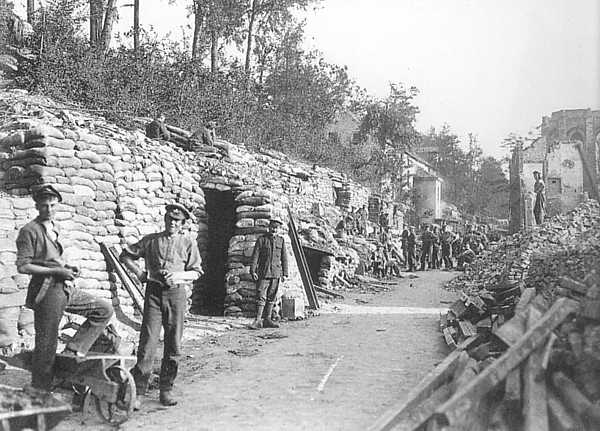
The Menin Gate was also the gate from which a soldier left the town on his path to the front.
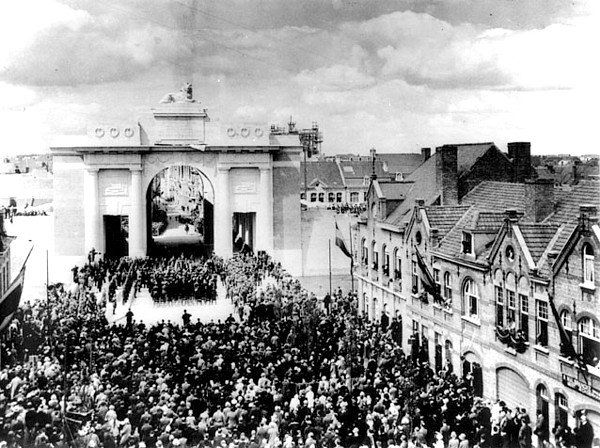
Since 1928 buglers of the local Fire Brigade, acting for the local Last Post Association, play the "Last Post" at the Menin Gate every evening at 20.00 hrs., gratefully commemorating the British dead of the Battles of Ypres during the First World War. It is an impressive, public solemn ceremony! The only exception to this tradition was a period during the four years of the German occupation of Ypres from 20 May 1940 to 6 September 1944.
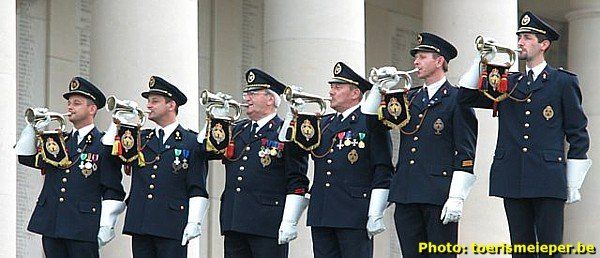
Via the Menin Gate we leave the town for Hellfire Corner, now an ugly turnpike of six possible directions.
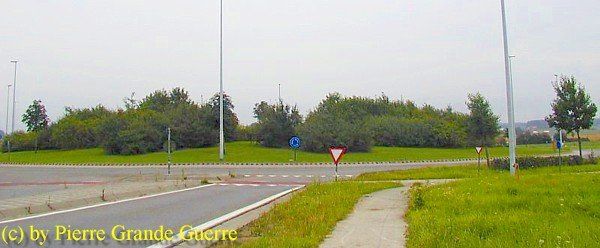
Hellfire Corner
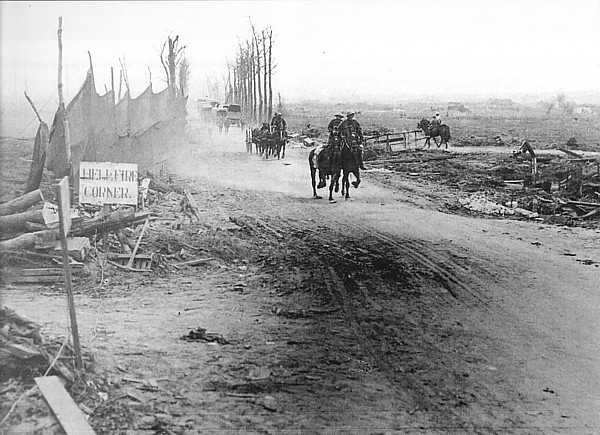
During the war Hellfire Corner was an important junction leading to the front.
Hellfire Corner was always under artillery fire.
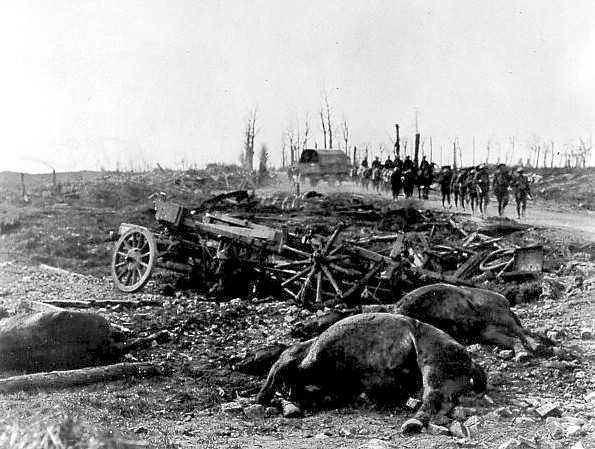
A post war demarcation stone at Hellfire Corner, standing on the corner, leading to the Menenstraat.
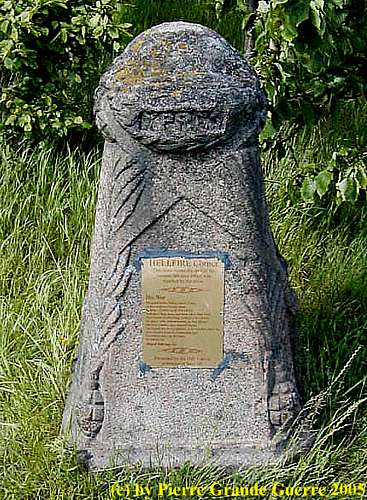
Five Battles of Ypres
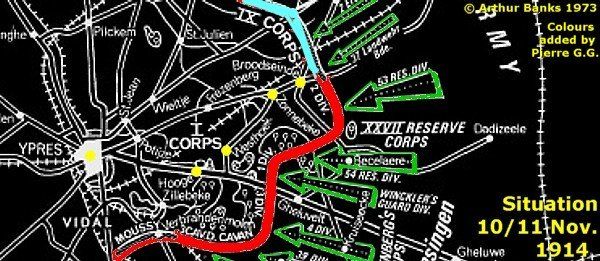
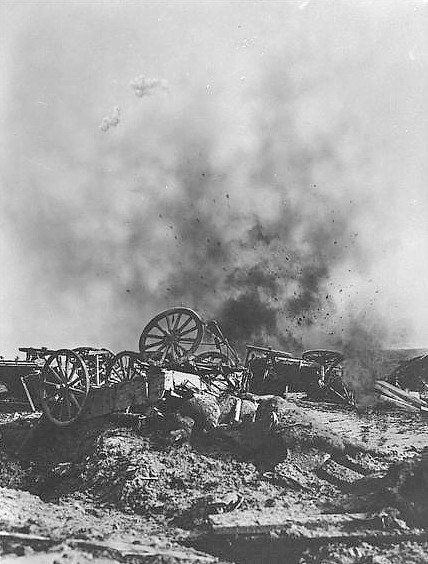
During our trips in the Salient, in this Photo Impression and in the next chapters, we will find relics and memorials referring to all periods of these battles and to periods in between these battles. But even during these relatively calm periods, the hostilities continued, causing several casualties.
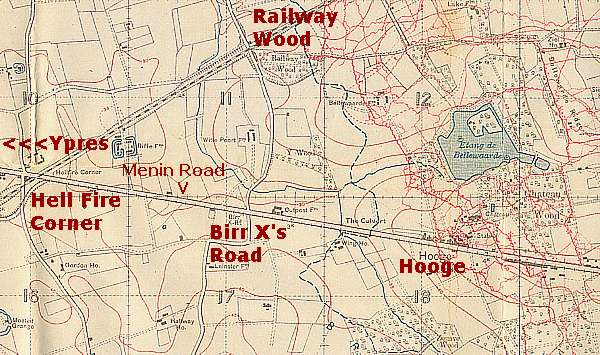
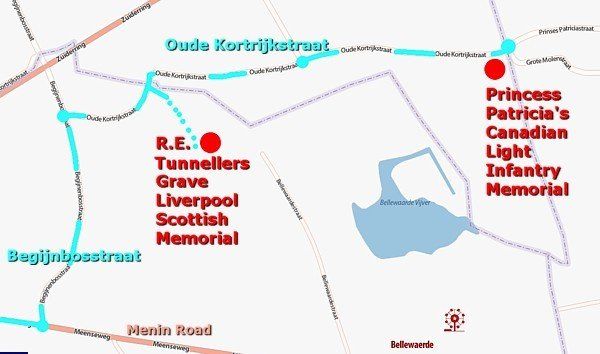
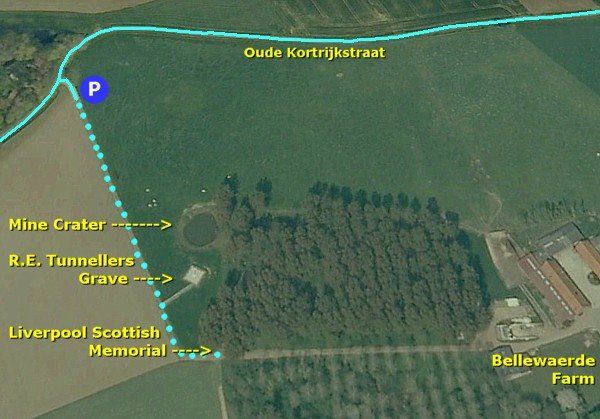
We park our car and we walk to the Grave of the Royal Engineer Tunnellers of Railway Wood, close near Bellewaerde Ridge.

On the left side of the path we pass a mine crater. In 2016 the crater is invisible, because it is surrounded by bushes.
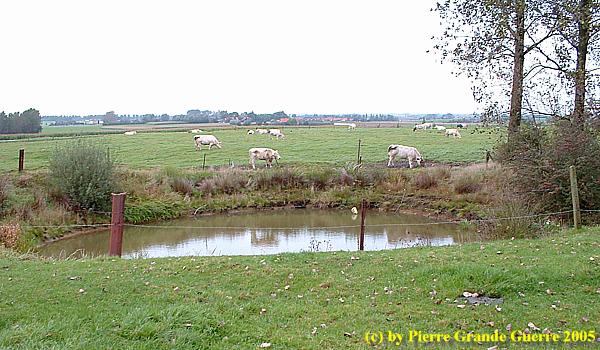
Next to the mine crater stands the Memorial for 12 Tunnellers of the 177th Tunnelling Company of the Royal Engineers .

The field around the Cross of Sacrifice is still unstable. The site is dangerous. Tourists might fall into a sudden sink hole, caused by eventually collapsed tunnels beneath the site.
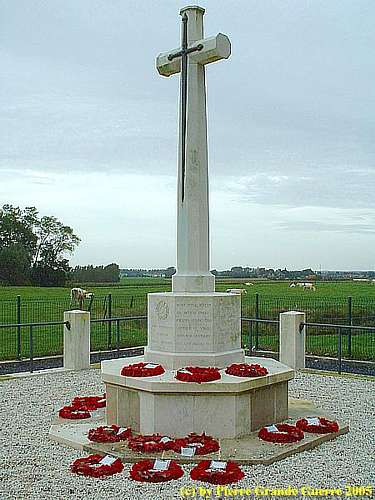
Underground mine warfare
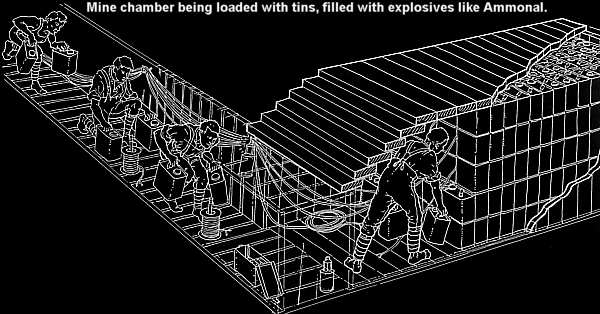
| From November 1915 underground warfare, tunnelling and mining, was an extended activity of
both belligerent parties
, near Bellewaerde, Hooge, Hill 60, Hill 62, and Messines. Mine warfare caused cruel man-to-man fights in pitch dark, narrow and low tunnels. The main goal of mining was to bring a large amount of explosives under an enemy position to blow it up at a specified time. Of course, the enemy was constantly listening and counter-mining.
In the following Ypres Salient Photo Impressions you will see often other relics of mine warfare; water filled craters in the landscape.
|

We walk some 50 metres further southward to the Monument for the Liverpool Scottish Regiment .
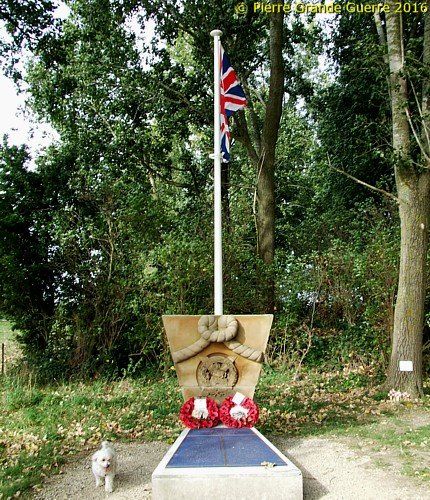
In 2015 the memorial has been completely renovated.
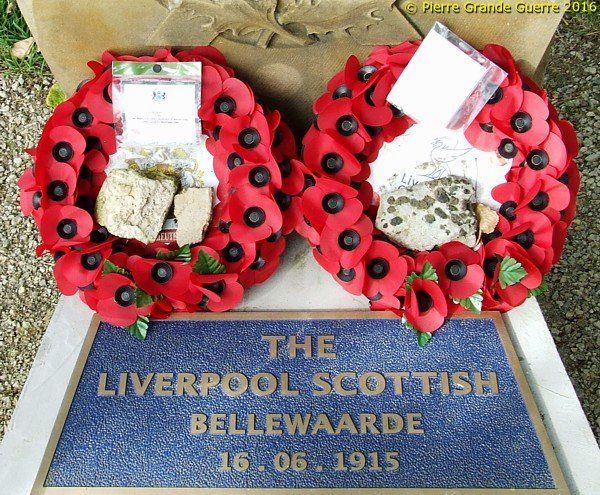
The path ends just before the private grounds of Bellewaarde Farm and the Bellewaerde leisure park.

The Liverpool Scottish at Bellewaarde - 16 June 1915

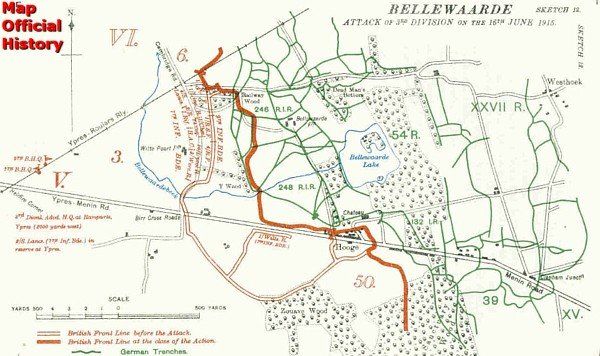
The text on the memorial explains the event of 16 June 1915.
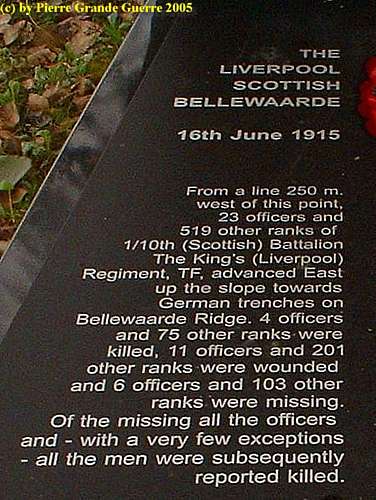
Their German opponents were units of the Reserve Infantry Regiments, R.I.R. 246 and R.I.R. 248.
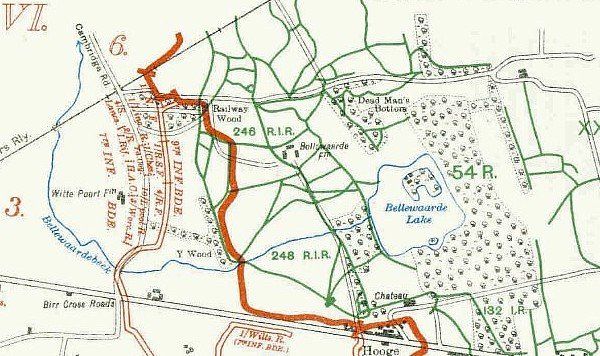
The two period photos of the action of the Liverpool Scottish were taken near this spot by Private F.A. Fyfe on 16 June 1915 at 6 AM.

We walk back to our car.
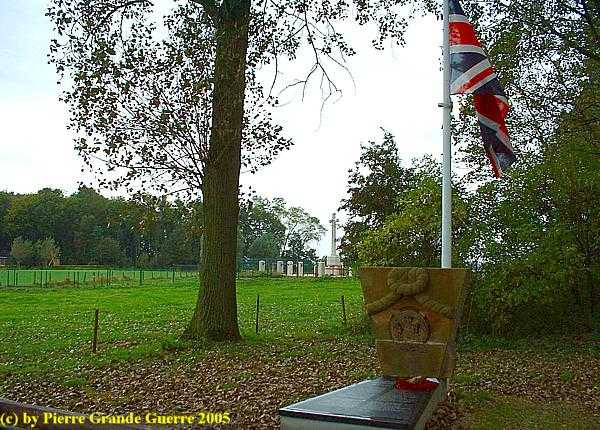
After leaving the site of Railway Wood, at the first curve to the east, we enter the area of the German front line trenches.
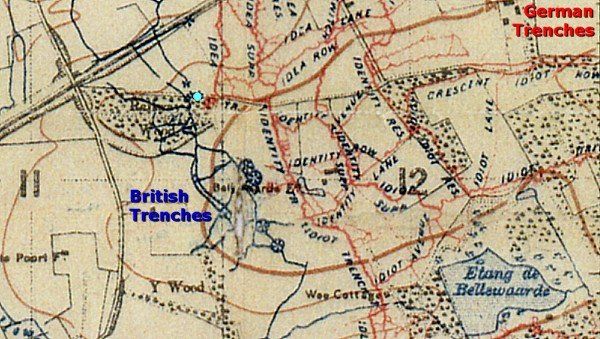
Via the Oude Kortrijkstraat we continue some 900 metres eastward.

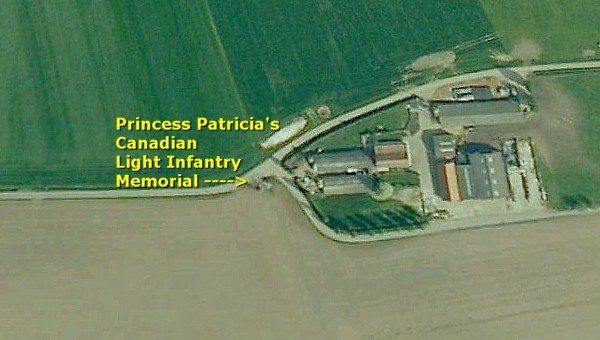

Five weeks before the fights near Railway Wood, on 8 May 1915 , Canadian troops fought here on Bellewaarde Ridge against units of the German 53. and 54. Infantry Divisions.
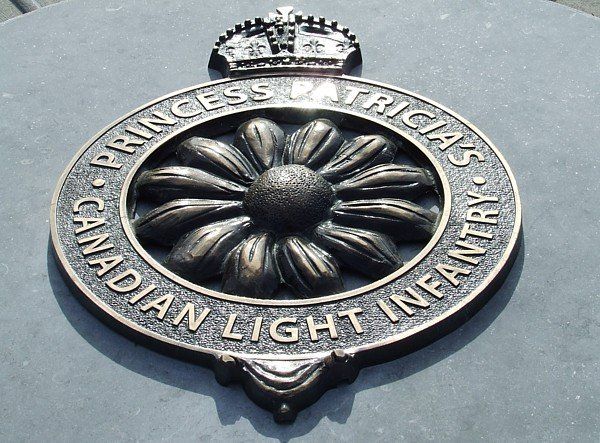
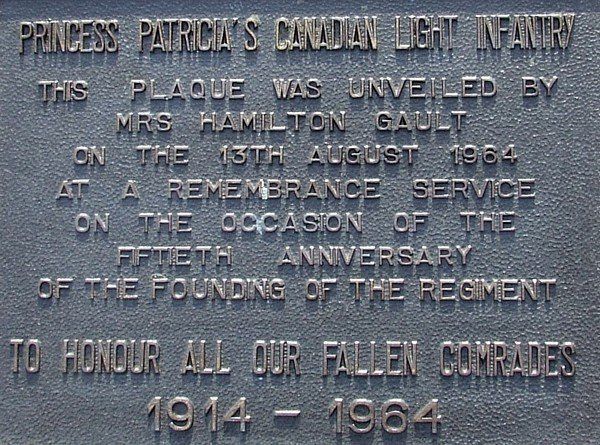
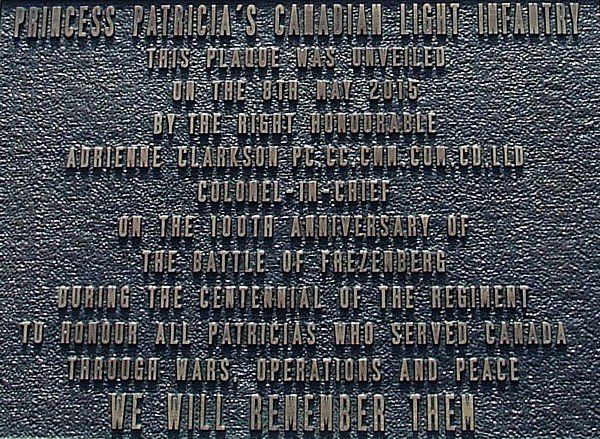
The Battle of Frezenberg Ridge - 8 May 1915

The actions of the Princess Patricia's Canadian Light Infantry on 8 May 1915 were a part of the Battle of Frezenberg Ridge.
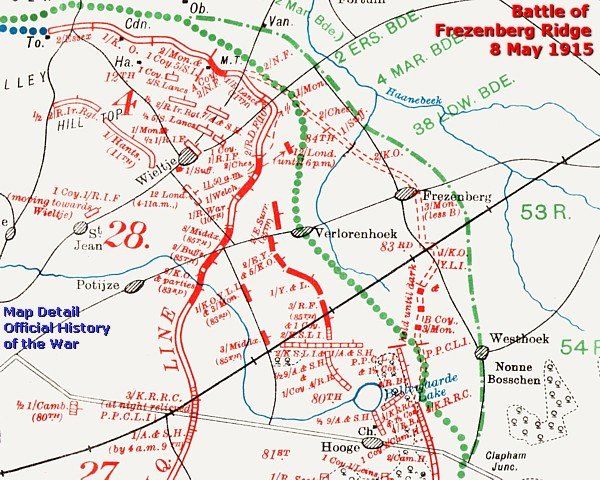
The information panel near the memorial explains this event concisely but accurately.
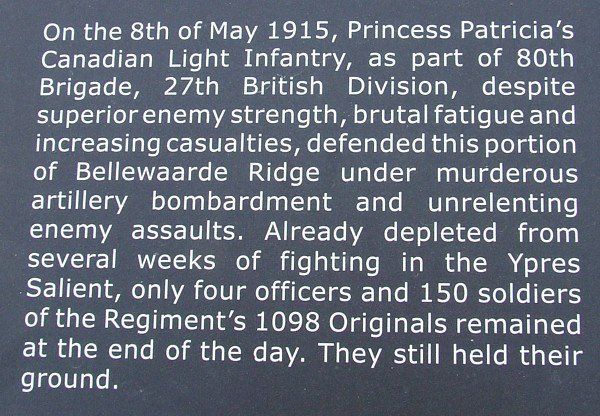
A zoomed-in map detail of the position of this Canadian unit, marked as "P.P.C.L.I.".
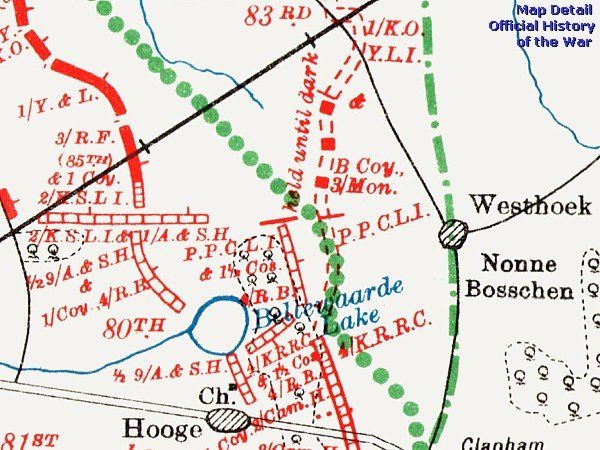

The spot of the memorial offers a fine panorama over the former battlefield.

The first panorama southward in 3 overlapping steps, starting south-eastward and continuing clockwise.
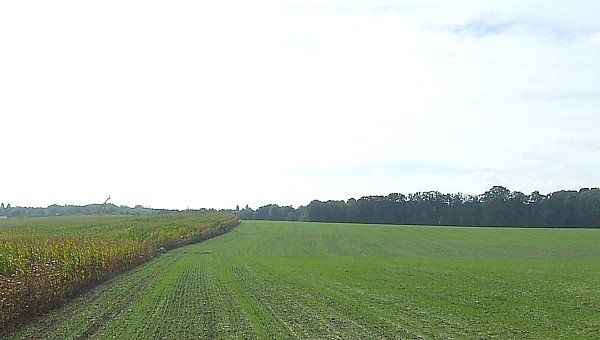
At the horizon the Bellewaerde leisure park.
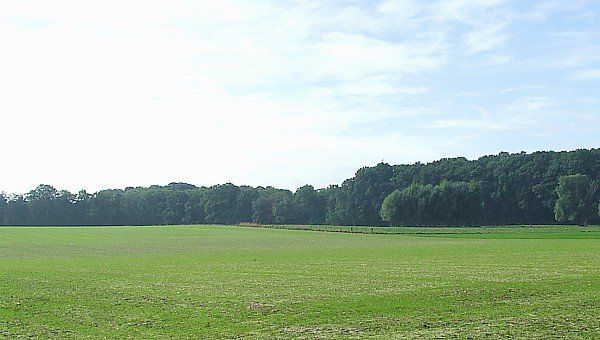
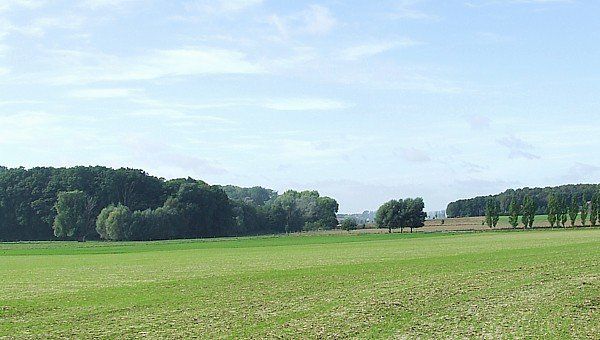
| This second panorama northward in 5 overlapping steps, starting north-westward and continuing clockwise. |

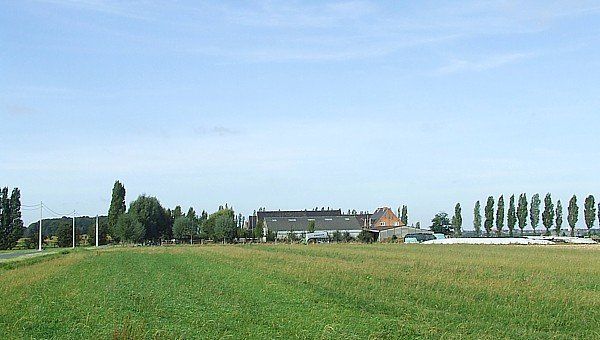
From November 1914 until June 1917 these fields were part of a network of German front line trenches!
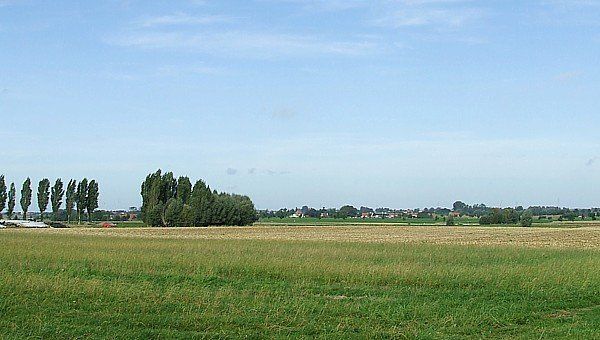
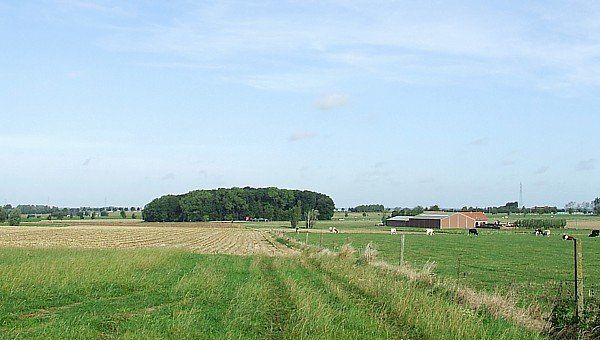
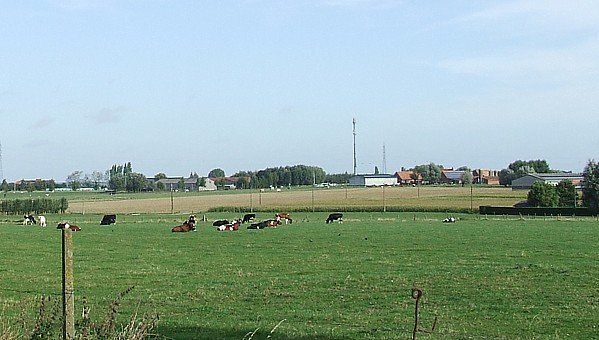
The hamlet of Westhoek.
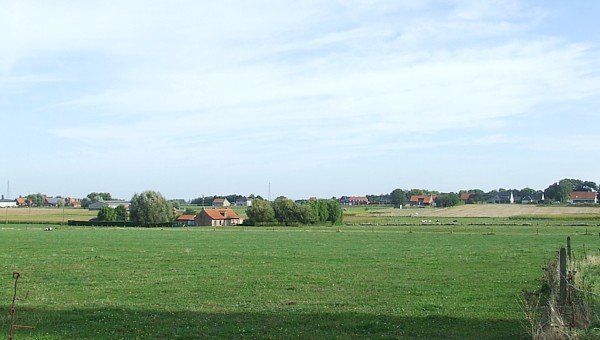

We turn around and at the first narrow road we turn right and northward in the Oude Bellewaardestraat.
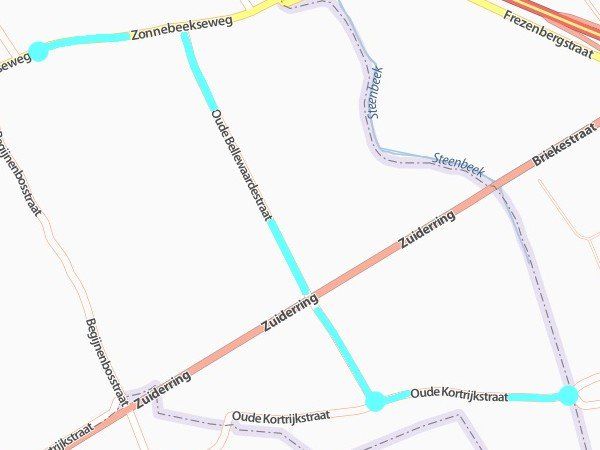
As you can see on the details of the trench maps below, left and right of the Oude Bellewaardestraat were the German front line trenches. At the T junction we turn right to continue westward via de Zonnebeekseweg, where we cross No Man's land to the position of the allied front line trenches.


For now we pass the British Aeroplane Cemetery to visit the French Cemetery of St. Charles de Potyze at Potijze.
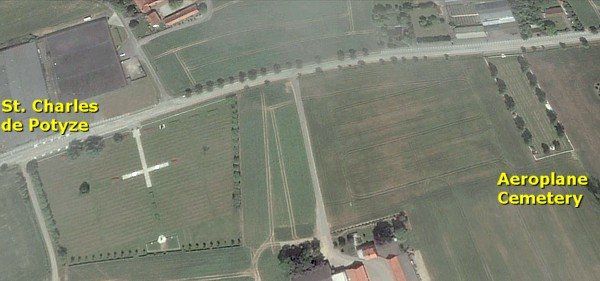
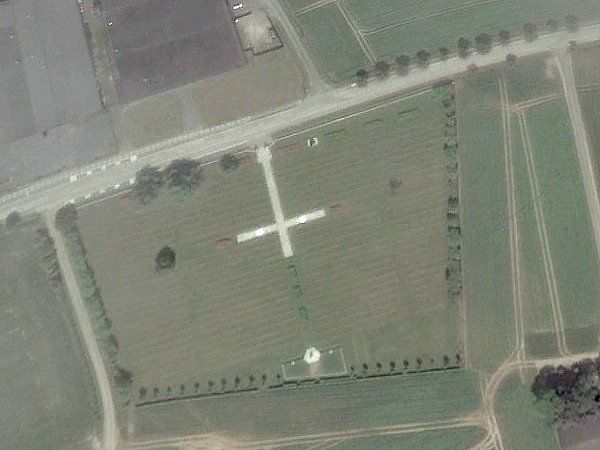
Cimétière National St. Charles de Potyze, Potijze
The French National Cemetery of Potijze
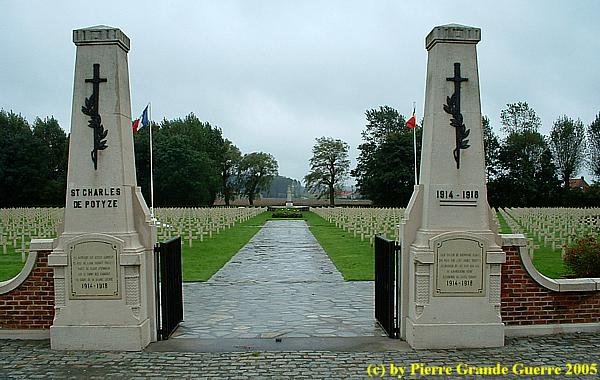
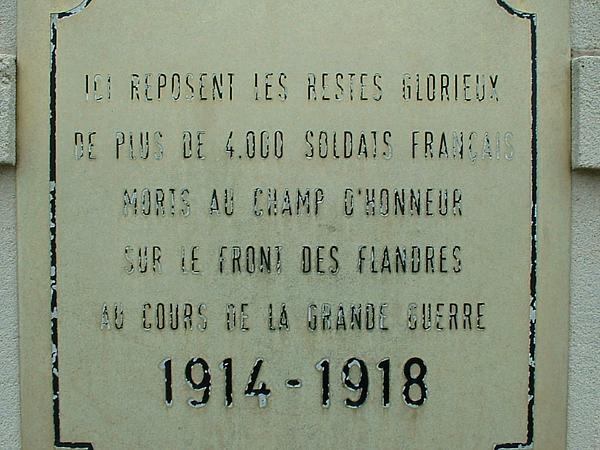
| "HERE REST THE GLORIOUS RELICS OF MORE THAN 4.000 FRENCH SOLDIERS, WHO DIED ON THE FIELD OF HONOUR ON THE FRONT OF FLANDERS DURING THE GREAT WAR. 1914-1918" |
Sometimes it seems to be forgotten that next to the Belgian and British Armies units of the French Army defended Belgian soil from the early start of the war, occupying various front sectors during the Battles of Ypres.
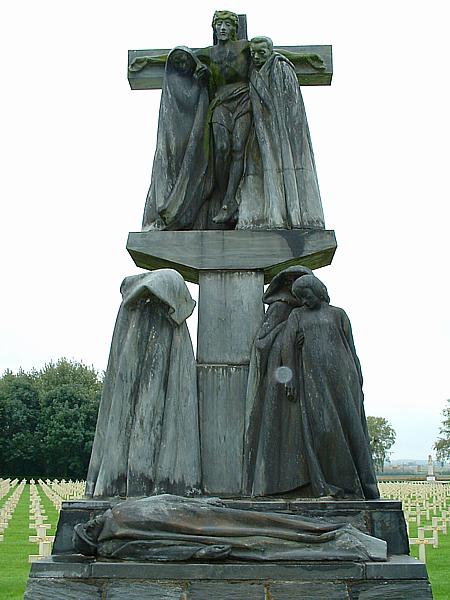
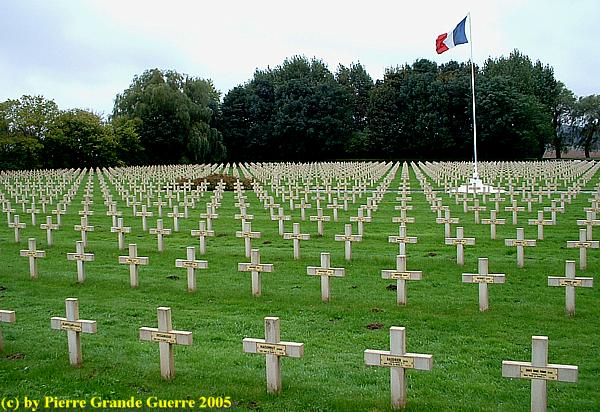
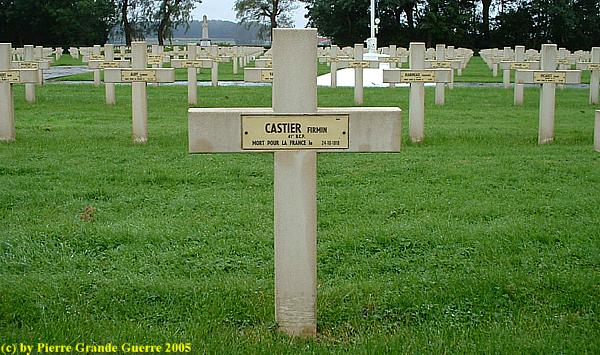
Thousands of French officers and soldiers of several units, including colonial troops, suffered heavily during their four years of deployment in the Ypres Salient and on the Yzer Front, many of them sacrificing their lives to defend Belgium.
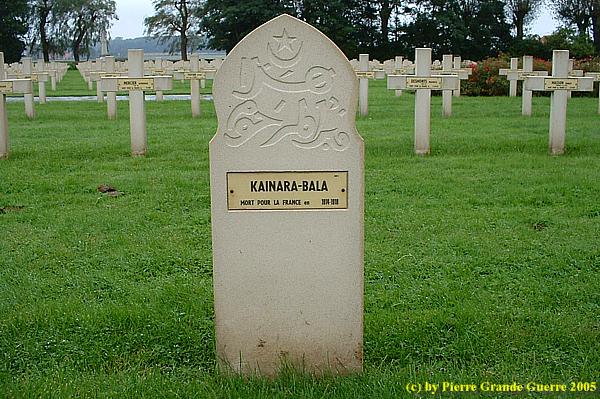
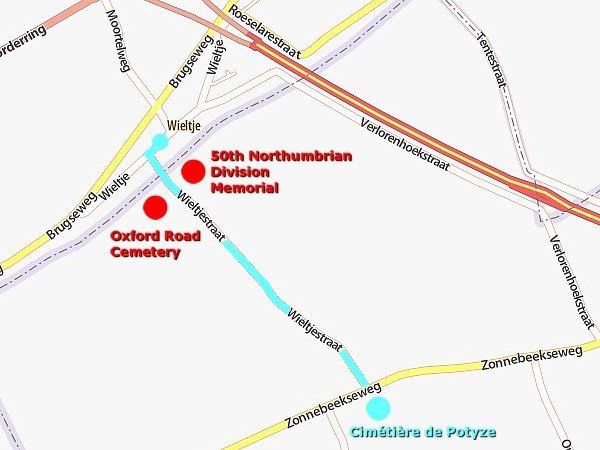
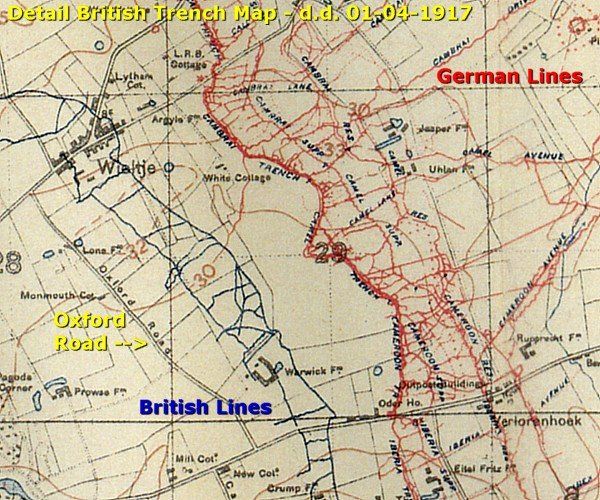

The Memorial of the 50th Northumbrian Division commemorates the fallen soldiers of both World Wars.
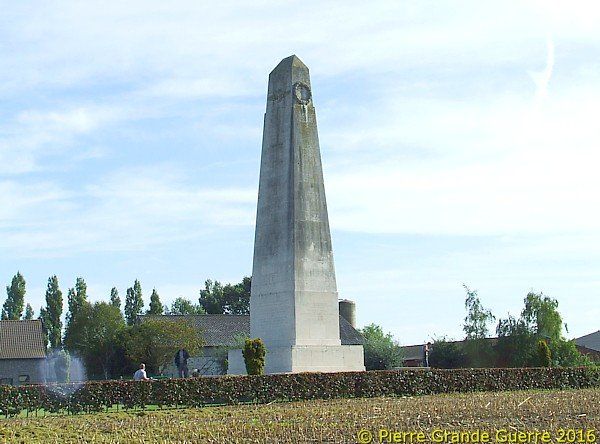
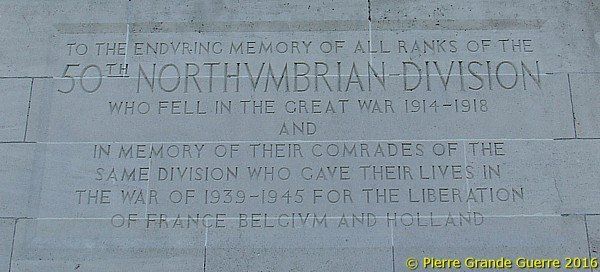
The 50th Northumbrian Division
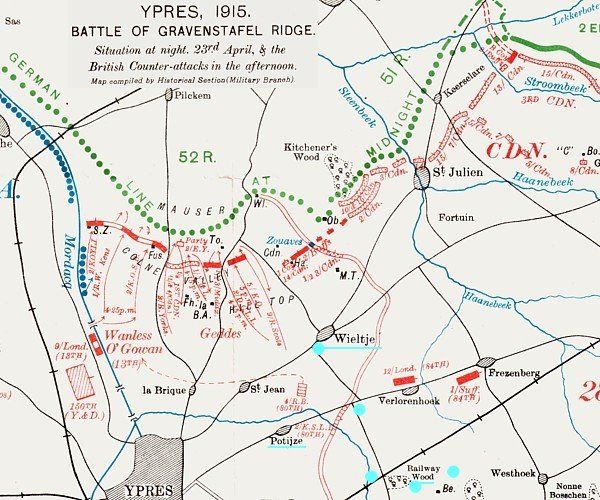
Without any normal, additional trench warfare training in France, the Division arrived on 22 April 1915 directly on the front in the area of Steenvoorde and Vlamertinghe. In the evening of the 22nd, the Division was ordered to have all units stand by. The Division arrived at the moment when the German army had attacked the 1st Canadian Division near St. Juliaan. The Germans opened the attack using a new invention of Dr. Fritz Haber : 168 tons of chlorine gas. The German massive gas attack opened the Second Battle of Ypres (22 April – 25 May 1915). On the 23rd the Division rushed into the battle to support the left flank of the 1st Canadian Division, being under a severe attack. The 51th deployed counter-attacks north and northwest of Wieltje. During the next days of this battle, between 24 April and 3 May, the day of its withdrawal, the 50th Division had 3,764 men killed, wounded and missing!
Later in 1915 the 50th Division was again involved in two large battles: the Battle of Frezenberg Ridge (8 May) and the Battle of Bellewaarde Ridge (16 June), both battles mentioned before on this page. After a stay at the front near Messines the Division was relieved on 10 August by the 19th (Western) Division, and transferred to Montigny-en-Gohelle, France, as part of III Corps.
Source a.o. : Wikipedia
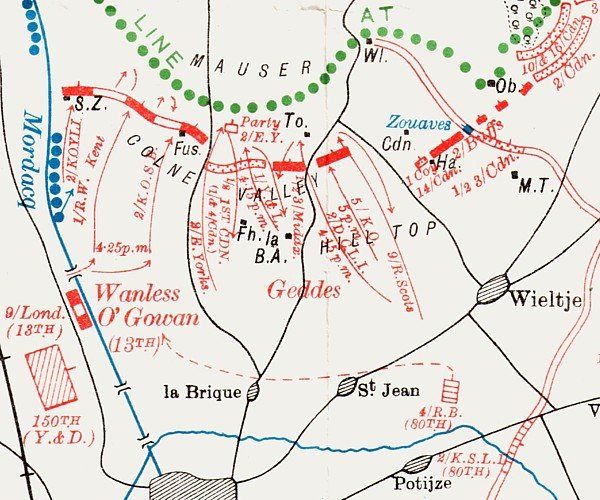
The inscriptions on the obelisk mention the names of the divisional units active in the Ypres Salient.
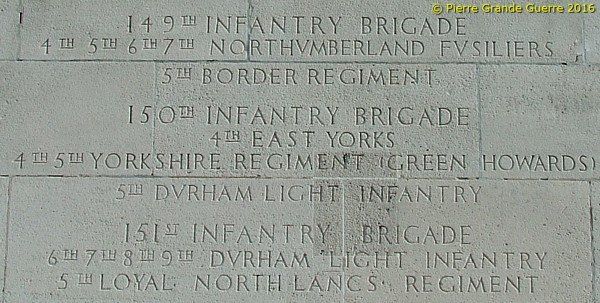
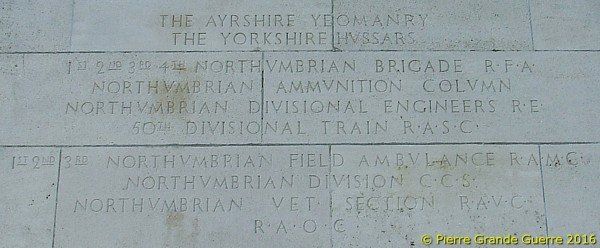
View from near the memorial south-eastward over the former British lines in the direction of the St. Charles de Potyze Cemetery.
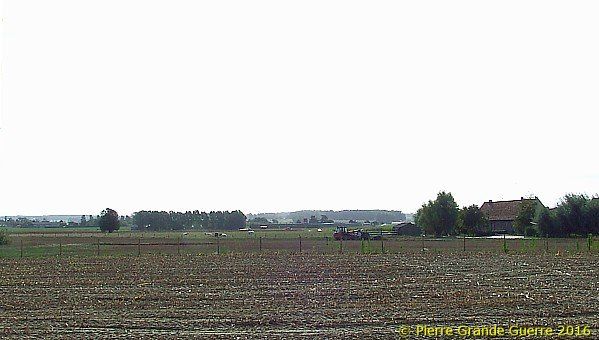
From Wieltje we return to the Oxford Road and we continue southward. At the T junction of the Zonnebeekseweg we turn right and at the next road we turn left to the Begijnbosstraat. During the war the British baptised this road the Cambridge Road.

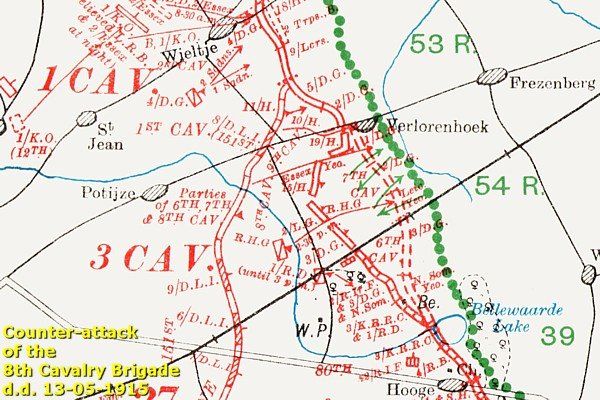
After a few kilometres on the east side of the road, just before the junction with the Zuiderring stand two crucifix memorials. Railway Wood, our point of departure, lies a few hundred metres to the south-east.
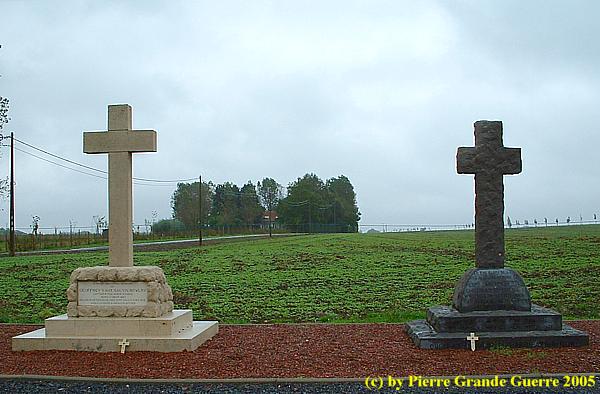
The left memorial is dedicated to a Captain of the Royal Horse Guards, Geoffrey Vaux Salvin Bowlby, who was killed on 13 May 1915 during the counter-attack of the 8th Cavalry Brigade.
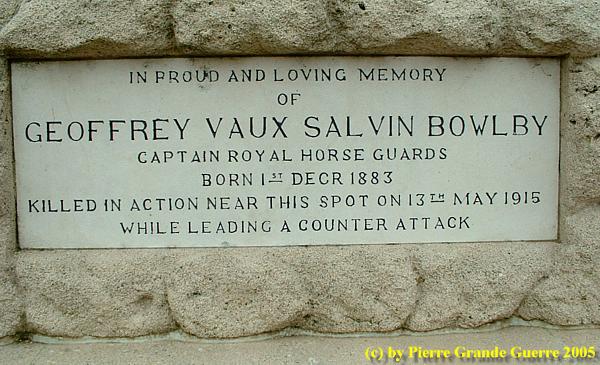
The base of the memorial on the right, dedicated to Captain Henry Lancton Skrine of the 6th Somerset Light Infantry, killed on 25 September 1915, and who "was buried close to this spot".
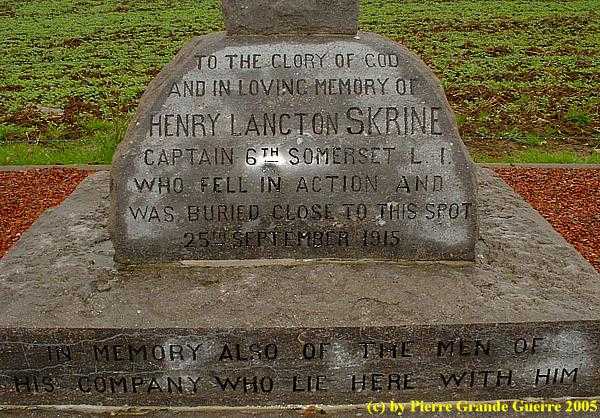
We return to the roundabout of Hellfire Corner to the start of the second stage of the battlefield area of Menin Road, to Hill 62.











